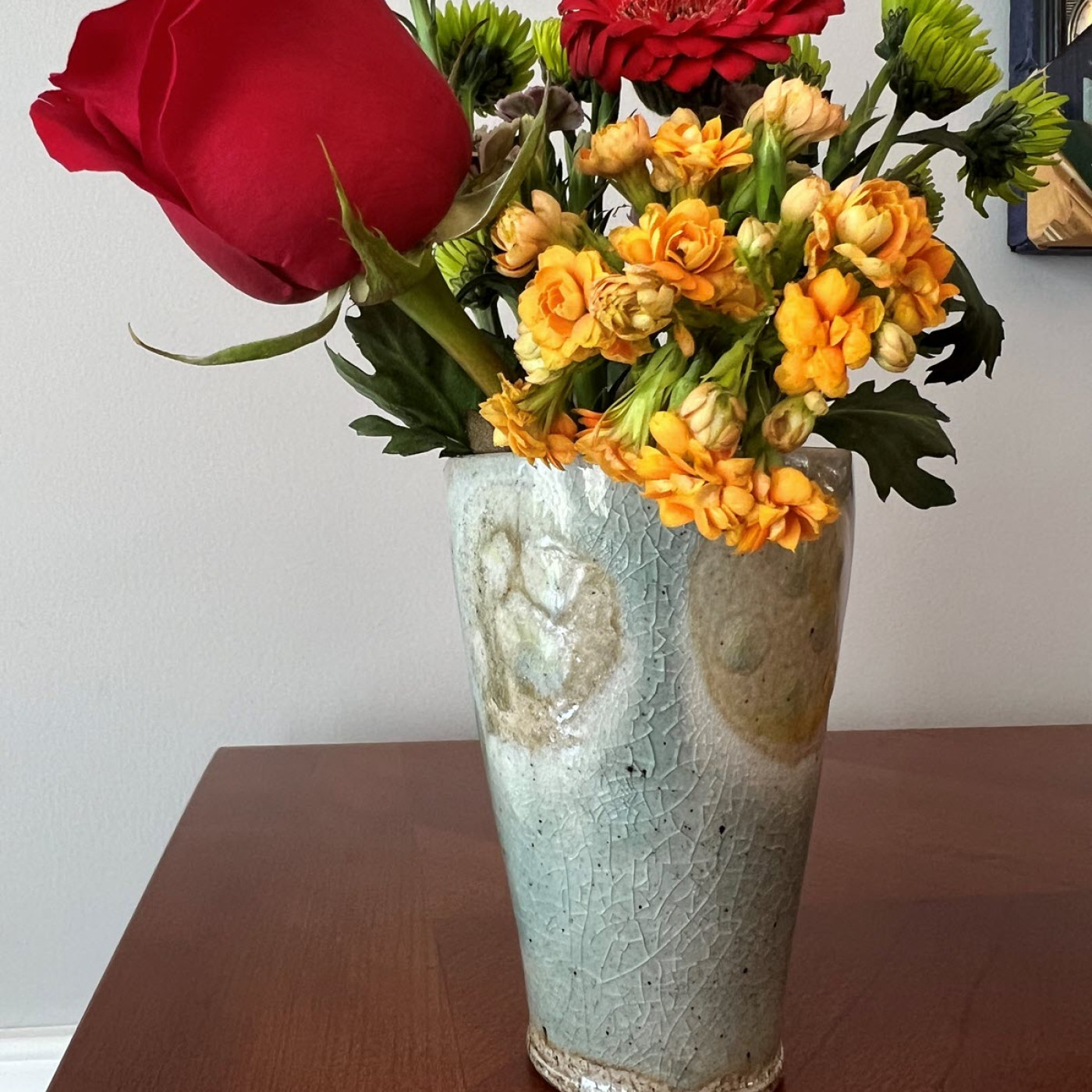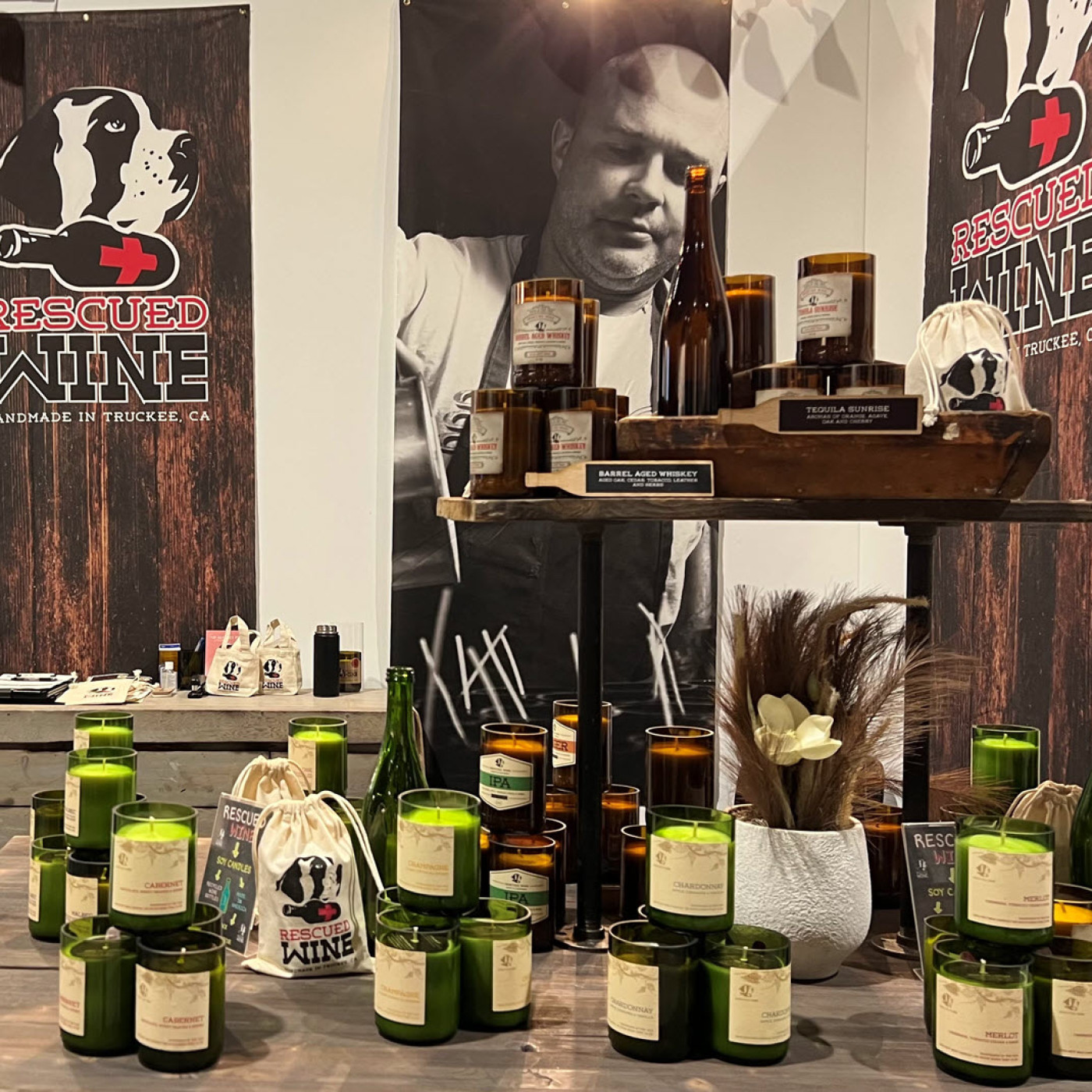Wholesale Pricing: The Story of the $10 Vase

Photos courtesy of Diane Sulg
For an artist who has been selling work to individuals, there is no bigger hurdle than pricing for the wholesale market. Every artist fears that reducing prices means not making enough money to survive — let alone grow their business.
Here are some words of consolation — yes, you can sell wholesale and make enough money to grow your business. And in this chapter of The Creative Wholesaler, we are going to show you exactly how to do it.
However, before we examine the particulars, it helps to look at the big picture. Remember, in moving to wholesale, you suddenly have an entirely new customer: the store owner/buyer.
That person does not have an easy life. Believe me. In most communities, she has a lot of competition.
There are shops like hers, big-box stores, discount malls, and of course online vendors. And then at holiday time and when the weather is nice, there are all the art fairs, some of them right by her shop.
There is no way this retailer wants to outprice her competition. Yet, at the same time, she needs to have enough income to pay for her inventory, rent, employee payroll, utilities, and so much more.
Years ago, when life was a lot less expensive, the shop owner could buy something for $10 and just double the price, selling it to her customers for $20. That was called “keystoning,” and for all intents and purposes, it is as dead as the horse and buggy.
In today’s world, when the retailer buys inventory, she marks up the price by 2.25, 2.5, or even as much as 3 times. That means, at a minimum, the $10 item is going to cost somewhere between $22.50 and $30 in her store. It also means she will make enough at the end of the year to stay in business!
So, let’s pretend for just a moment that you make that $10 item, and it is a small, 4.5" ceramic vase. You have been selling that tiny vase like crazy in your studio and at local art fairs, last year selling about 100 of them.
It is your most popular item, and sometimes you even think you should raise the price. Well, I am here to tell you that day has come. Let’s see why.
First, you need to do a cost analysis on the vase. You have materials like the raw clay and finishing glaze. Let’s say those come to $5.
Then you have the cost of your labor — throwing it on the wheel, checking the dryness, loading and unloading the kiln, glazing it, and firing it again. You figure you have another $5 in labor.
And you have overhead, such as your potter’s wheel, kiln, and tools. None of those were free.
Oh, and there is the cost of electricity to run your kiln, which you estimate is another $1.50. Wow, that vase should be more than $10 — especially given the fact you have not even included making any profit.
Adding the cost of materials to your labor and then including your overhead, you have $11.50 invested in that vase before you make any profit. You decide to add $1 to each vase to gain some profit for your business, making the lowest price for your small vase $12.50.
So, in your new wholesale venture, you decide to price that vase at $12.50. You can feel good because your costs are covered and you will make a profit on a popular item in your line.
Just keep in mind that when the retailer purchases it from you, she is going to mark it up by about 2.3 times. It is going to be on a shelf in her store with a price tag of $29. The good part is that it is selling well for her and, within a short time, she places a reorder for another dozen small vases.
Now, if the store owner has no trouble selling your tiny vase for $29, it seems obvious you should be able to do the very same thing. However, you are undecided. It seems like such a big price jump for your customers.
What should you do? It is quite simple. Relax, and make the price of your lovely vase $29.
If you do anything less, your new wholesale customer will find a new potter who makes a similar vase and who will not undersell her. As we noted in the beginning, she has competition coming at her from every direction.
The very last person she wants to compete with is you. She knows she can never win in that scenario, and she will be very disappointed to have competition from her wholesale partner. Once you decide to become a wholesaler, that store owner is the most important customer you have! Is anyone else buying 24 of your vases in just two months?

In fact, if you become more analytical about your business, you’ll realize why volume purchases are so important. When you have just 20 wholesale customers who each order 24 small vases a year, that is 480 vases at $12.50 — an additional $6,000 in revenue.
If you still sell your vase to individuals in your shop, online, or at art fairs, you might not sell as many. But even if you just sell 50 a year at $29, that is another $1,450 of income.
When we began this small scenario, you were selling 100 small vases a year at $10 and making $1,000 of income from them. However, when you decided to sell them wholesale, you analyzed all the costs involved with making that vase and raised your wholesale price to $12.50 and your retail price to $29.
This year, your income from the small vase could easily be $7,450! And you were worried about selling wholesale? The small vase scenario outlined here is not real but rather just an example to show you how selling wholesale can grow your business within just a few years.
There are other ways you can stimulate your wholesale sales. For instance, small or low-cost items can be sold in multiples.
You can stipulate a minimum product amount, such as five of each greeting card design, eight of each candle fragrance, or a dozen lip balms in each flavor. Having these items prepackaged will make order filling and shipping a lot easier.
There are also many moderately priced items you can sell in sets. Christmas ornaments, for example, can be grouped with two or four of each design.
Wine glasses can be sold in pairs, as can household items such as place mats, pillows, and candlesticks. The retailer can certainly price each of these products separately, but you are making a larger sale by selling them in multiples.
Some creative wholesalers create introductory packages for their products, which combine various sizes, colors, designs, or even products. The price might be slightly lower than if the items were purchased individually. However, the retailer has a ready-made selection for her store and saves a bit of her budget as well. At the same time, the wholesaler has the satisfaction of making a nice sale to a new customer, so it is a win-win!
If you have been selling your creations one at a time, either online, at art shows, or from your studio, you know it takes many customer interactions and individual sales to provide you with a sizeable income. In selling wholesale, you are making several worthwhile trade-offs.
First, you are working with a customer who is going to place a sizeable order. Instead of buying one pair of earrings for $75, she is going to be spending $500 or more to fill the jewelry case in her boutique.
Moreover, while most makers always have a few loyal followers, most of their sales are to new customers who purchase from them just that one time. The goal in wholesale is to gain a customer who has a successful store. Assuming her customers love your product, she may order from you several times in a year and for many years to come.
If you are just entering the wholesale market, now is a good time to do a cost analysis on each of your products. Be certain you are buying your raw materials at a good price, and keep in mind that as you increase your sales volume, you will possibly be able to purchase these at a lower price.
Keep an eye on your exact costs, with the intent of lowering them when possible. If there are a few products that are time-consuming to produce or that use expensive materials, you do not need to include those in your wholesale offerings.
There are thousands of artists and makers who have thriving businesses because they are selling wholesale. They are happy to be in their studio more and traveling to fewer art shows.
They have become business savvy and work every day to develop new products, made more efficiently and with exceptional product marketing. Look for some of those marketing tips in the next chapter of The Creative Wholesaler.
About the Author
Diane Sulg
Diane Sulg is executive director of CRAFT and founder and co-chair of American Craft Week (ACW). She is a handmade advocate who provides valuable information in her one-day seminars titled “All About Wholesale” at wholesale shows throughout the United States. Diane is the former owner of Maddi’s Gallery, in Charlotte and Huntersville, North Carolina.
